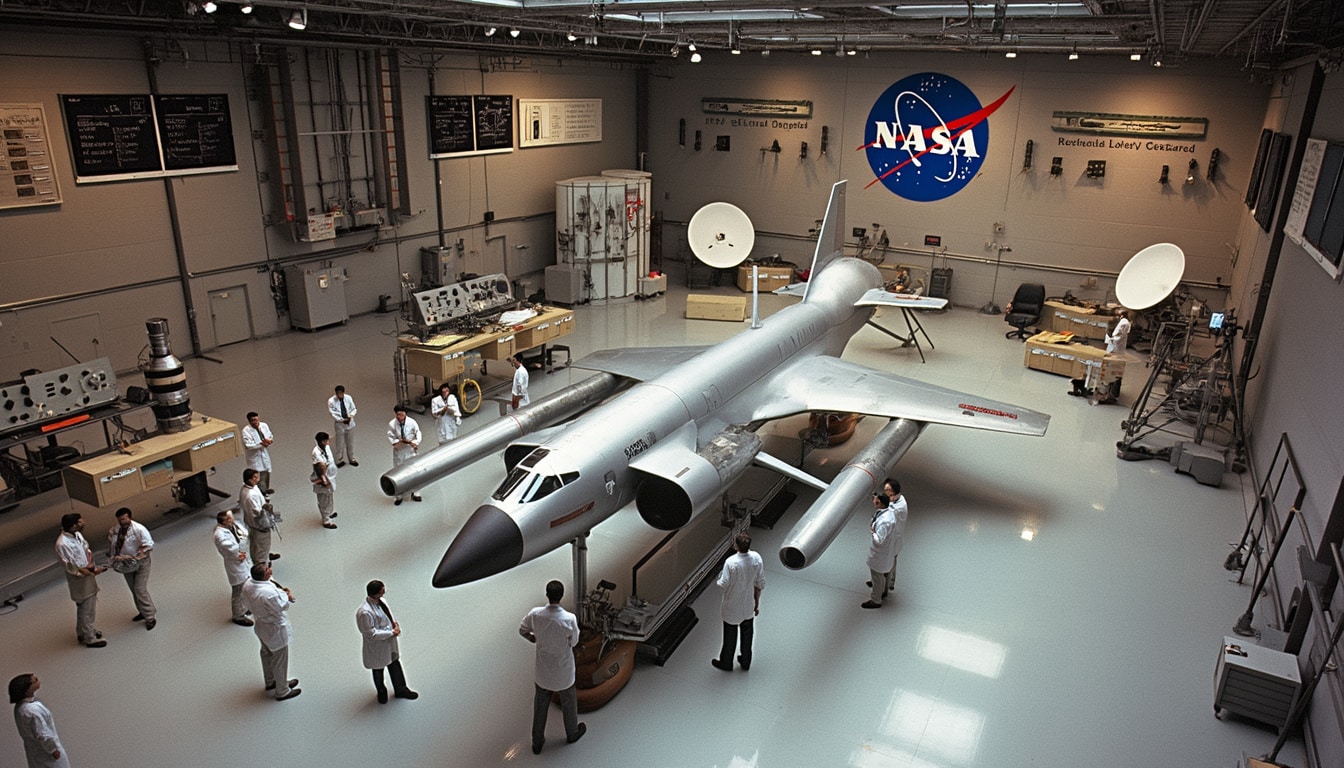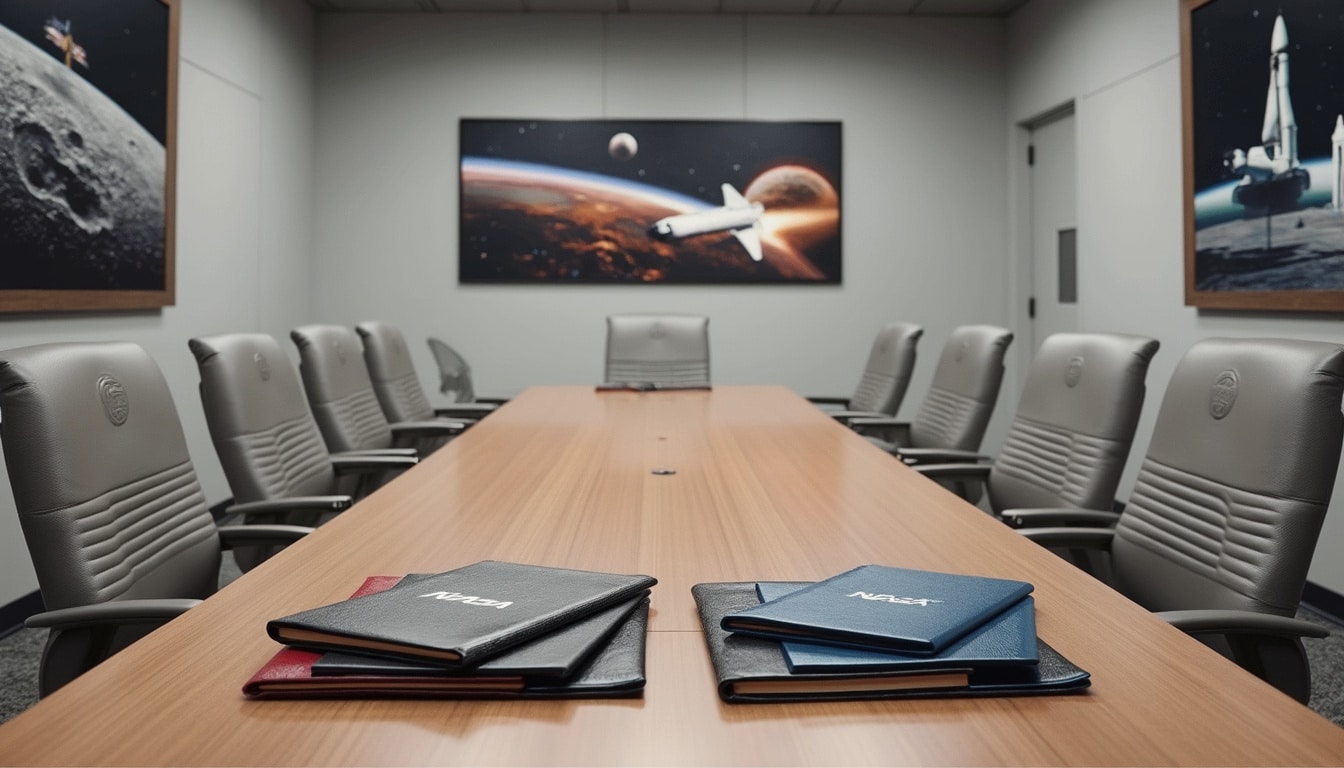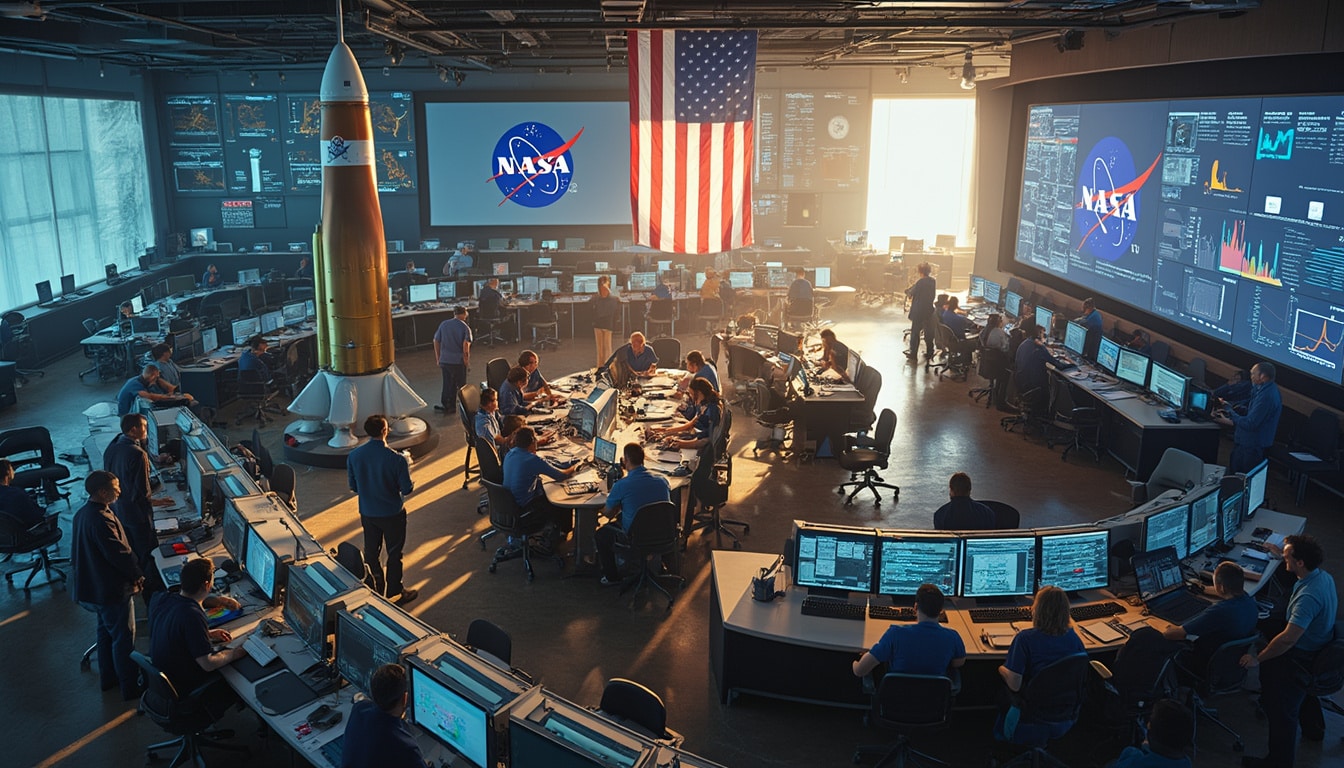The ever-evolving landscape of space exploration continues to captivate minds and fuel ambitions, particularly within key organizations like NASA. The Armstrong Flight Research Center is at the forefront of these developments, creating waves of progress and innovation while navigating the challenging waters of executive orders determining funding and operational strategies. Eager mission experts at NASA remain committed to transparency and strategic management, ensuring that both administrative directives and scientific advancement can coexist harmoniously. With a keen focus on evaluating NASA’s activity and adapting to new executive orders, this summary sheds light on the vital updates from the Armstrong Flight Research Center as they forge ahead amidst the complexity of compliance with government initiatives.
At the heart of the discussion is the intriguing balance of maintaining NASA’s pioneering spirit while adhering to guidelines from the current administration. Insights from communications, such as an open memo from Center Director Brad Flick, reveal the thoughtful approach taken by key personnel in disseminating important information regarding compliance activities and the overall progression of NASA’s mission. This article delves into the updates surrounding executive orders, evaluates the implications for NASA’s contracts and grants, and highlights the agency’s longer-term vision for space exploration.
Executive Orders and Their Implications for NASA
Executive orders play a significant role in shaping governmental priorities and resource allocations, especially in an organization like NASA, which relies heavily on funding for ambitious projects. Under the guidance of the current administration, NASA is under scrutiny as compliance with varying directives takes shape. Prompted by significant pressures, NASA’s Armstrong Flight Research Center is spearheading the assessment of current contracts and grants, ensuring alignment with the administration’s goals.

Understanding the Compliance Activities
The recent emphasis on evaluating all active procurement activities has driven staff at NASA Armstrong to adapt swiftly. Every facet of NASA’s missions is being scrutinized to ensure alignment with the latest administration’s objectives. With thousands of contracts being reviewed, the pace is brisk but methodical, illustrating the importance of compliance while retaining the focus on scientific missions. Each team member contributes essential information towards delivering a comprehensive assessment by the set deadline, allowing NASA to demonstrate its commitment to fulfilling governmental directives while advancing space exploration.
Moreover, as communication cascades through various levels of the organization, transparency emerges as a prime focus. Director Flick emphasizes the value of informing staff about progress, achievements, and challenges associated with executive orders, creating a culture of proactive engagement. This approach not only fosters clarity among employees but enables NASA to display its resilience, encouraging teams to view changes as opportunities for growth rather than obstacles.
Evaluating the Risks of Budget Reductions
Among the most pressing issues facing NASA is the potential for budget cuts under the current administration’s initiative to ensure governmental efficiency. Reports suggest a possible 50% reduction to NASA’s budget, which could have catastrophic repercussions for essential programs and research projects. Organizations like Boeing, Lockheed Martin, and Northrop Grumman depend on NASA’s continued funding to thrive and innovate in critical areas of space exploration. This potential reduction raises concerns over the long-term viability of NASA’s ambitious projects, including collaborations with SpaceX and Blue Origin.
In addressing these risks, NASA has begun drafting a detailed implementation plan focusing on reducing bureaucracy while enhancing overall operational clarity. Within this plan, strategies must be devised to combat impending budget challenges, ensuring key personnel across various departments have the requisite tools to succeed. Furthermore, recommendations for collaborations with industry leaders such as Raytheon Technologies and General Dynamics may create a buffer against harsh budget constraints, allowing NASA to maintain its pivotal role in global space exploration.
NASA’s Contracts and Grants: Current Status and Future Directions
The landscape of NASA contracts and grants forms the backbone of its mission execution. With thousands of agreements active at any point, ensuring they remain relevant and aligned with emerging directives is crucial. As part of the ongoing evaluation process, NASA Armstrong is making concerted efforts to facilitate clear alignment and communication across its workforce.
Contract Evaluations Amid Changes
As part of this review process, the Armstrong Center has initiated a thorough examination of all active contracts, ensuring adherence to the goals established by executive orders. This multifaceted evaluation strives not only for compliance but also to prioritize projects tied closely to the foundations of space exploration. Central to this ambition is the identification of leaders within organizations who can adapt quickly in response to sudden changes, ultimately ensuring NASA’s overall effectiveness in navigating turbulent waters.
Reviewing contracts will shed light on opportunities for collaboration with aerospace giants, including SpaceX and Boeing. By analyzing past project performances, NASA can refine its strategic approach in future partnerships, leveraging unique capabilities and innovations that these companies present. The outcome of this scrutiny will provide valuable insights into how NASA can maintain its competitive edge in a rapidly evolving space industry.

Adapting to Shortened Timelines and Increased Expectations
A key challenge confronting NASA involves the necessity to respond rapidly to changing expectations from congressional leadership and agency stakeholders. As mentioned in administrative objectives, NASA is pushing to commercialize its efforts wherever possible. This shift implies that future funding may hinge on collaboration with external partners, incentivizing innovative projects that create value beyond mere scientific outputs.
As NASA adapts, staff is encouraged to utilize tools for tracking accomplishments and contributions. This initiative allows for structured feedback and transparency within the organization, necessary for promoting accountability. Insights gleaned from these tools can empower NASA’s workforce to align individual efforts with larger organizational goals—a vital aspect in demonstrating progress and achieving funding objectives amidst fluctuating environments.
Long-Term Vision: Future of NASA and Space Exploration
As NASA navigates the current climate brought about by executive orders and budget adjustments, its long-term vision for the future remains steadfast. Exploring options for expansions into lunar and interplanetary exploration, the agency continues to prioritize innovations that position it as a leader in the industry. This mission does not only hinge upon governmental funding but thrives on partnerships and collaborations with private companies.
Fostering Innovation Through Collaborations
The exploration of strategic collaborations with private firms such as Blue Origin and Sierra Nevada Corporation is aimed at expanding NASA’s capabilities. As technology advances at an accelerated pace, having robust partnerships will foster innovation and nations’ efforts to push boundaries further beyond low Earth orbit. These alliances ensure that NASA can access cutting-edge technologies essential to fulfilling key missions as the space race heats up.
The pursuit of innovative advancements hinges significantly on cross-industry collaborations; thus, effective alliances with defense contractors like Raytheon Technologies and General Dynamics serve to establish a more robust position in addressing the complexities of human-settlement missions beyond Earth.
Navigating Challenges and Maintaining Momentum
While challenges abound, the commitment to embarking on ambitious missions remains unwavering for NASA. Future explorations, including the Artemis program that aims to return humans to the Moon, rely on federally allocated budgets and efficient collaborations between public and private sectors. Ongoing discussions reveal the drive to further human knowledge through sustained missions and research dedicated to understanding our solar system.
That spirit of exploration, strengthened through NASA’s adherence to transparency and strategic management, promises to propel the agency forward even amid hurdles presented by executive orders. As the Armstrong Flight Research Center leads this charge, the workforce remains resilient—ready to embrace the upcoming opportunities for growth and discovery that await in the universe.
Recent Developments and Prospects on the Horizon
Insights into the latest developments at NASA Armstrong reveal a motivated workforce dedicated to not only understanding the intricacies of executive orders but also implementing significant changes that promote efficiency and compliance. Current facets of NASA’s projects maintain a clear trajectory, and the promise for future endeavors further enhances its stature in space exploration.
Prioritization of Human Capital
Ultimately, the most critical asset within NASA is its dedicated workforce. Employees’ insights and experiences play an essential role in navigating both the complexities tied to executive orders and the imperative task of maintaining successful programs. Director Flick’s recent communications emphasize the importance of encouraging teams to remain engaged, vocal, and proactive in surmounting challenges. It is through leadership initiatives and workplace flexibility that employee morale can thrive, fostering creativity as individuals work together towards shared goals.
Furthermore, cabin teams within NASA are encouraged to not only adapt to change but to actively provide input on their respective programs. This grassroots approach showcases the commitment to fostering an environment where every voice can contribute meaningfully to the broader objectives of NASA. A workforce that feels appreciated will invariably lead to a culture of collaboration and innovation essential to maintaining NASA’s pioneering spirit.

Looking Ahead to 2025 and Beyond
The future trajectory for NASA looks promising as the agency firmly plants its feet into 2025 and beyond. As conversations about interagency collaborations intensify, opportunities for partnerships with significant players like SpaceX, Blue Origin, and Lockheed Martin highlight an emerging trend toward shared objectives. NASA continues to promote a culture of adaptability while ensuring its mission to explore outer space remains unhindered.
Anticipated missions scheduled for the coming years are poised to answer fundamental questions regarding humanity’s existence while pushing the ethos of scientific inquiry to invigorate curiosity. The commitment to achieving inclusive explorations through gender and cultural diversifications will continue to fuel NASA’s decision-making, positioning it to lead initiatives that inspire and educate future generations of explorers.
As the Armstrong Flight Research Center navigates this dynamic landscape, the interplay of executive orders and NASA’s ambitious plans will define the agency’s legacy in the exploration of outer space.
| NASA Partners and Collaboration | Industry Focus |
|---|---|
| SpaceX | Commercial crewed missions |
| Boeing | Deep space exploration |
| Lockheed Martin | Lunar Gateway program |
| Blue Origin | Launch capabilities and lunar missions |
| Sierra Nevada Corporation | Crewed cargo delivery |
| Raytheon Technologies | Defense and technology solutions |
| General Dynamics | Aerospace and defense |




Leave a Reply